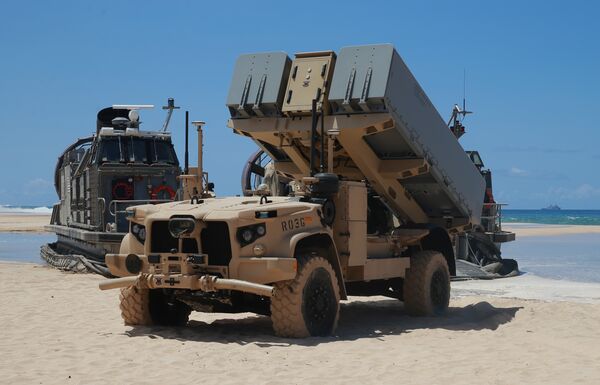
An NMESIS launcher is deployed into position at the Pacific Missile Range Facility, Barking Sands, Hawaii, in August 2021. The NMESIS system participated in a live-fire exercise as part of Large-Scale Exercise 2021. (US Marine Corps)
The US Marine Corps (USMC) is advancing plans to develop a remotely operated coastal missile battery equipped to fire the Raytheon/Kongsberg Naval Strike Missile (NSM).
On 22 December, Raytheon's Missiles and Defense business was awarded a USD21.16 million contract by the Marine Corps Systems Command for the delivery of production representative models of the Navy/Marine Corps Expeditionary Ship Interdiction System (NMESIS) NSM launcher unit (NLU) and weapon control system (WCS). Fiscal year (FY) 2022 research, development, test, and evaluation (marine corps) funds amounting to USD9.5 million were obligated at the time of award, and the work is expected to complete in April 2023.
Identified by the USMC as a Naval Expeditionary Force modernisation priority, NMESIS is a land-based missile launcher platform designed to provide the USMC with a ground-based anti-ship capability for operations in the Indo-Pacific theatre. The full system integrates an NLU, featuring two encanistered NSM missiles, onto a Remotely Operated Ground Unit for Expeditionary Fires carrier (an unmanned adaptation of the Joint Light Tactical Vehicle chassis developed by Oshkosh Defense). The NLU is controlled by a WCS externally located in a command-and-control vehicle.
Intended to facilitate sea denial and control, NMESIS will be employed by medium-range missile batteries serving as part of Marine Littoral Regiments (MLRs) conducting Expeditionary Advanced Base Operations inside the adversary's weapons engagement zone. Fielding of an initial eight NMESIS systems for a first MLR is planned for FY 2024.
Looking to read the full article?
Gain unlimited access to Janes news and more...



